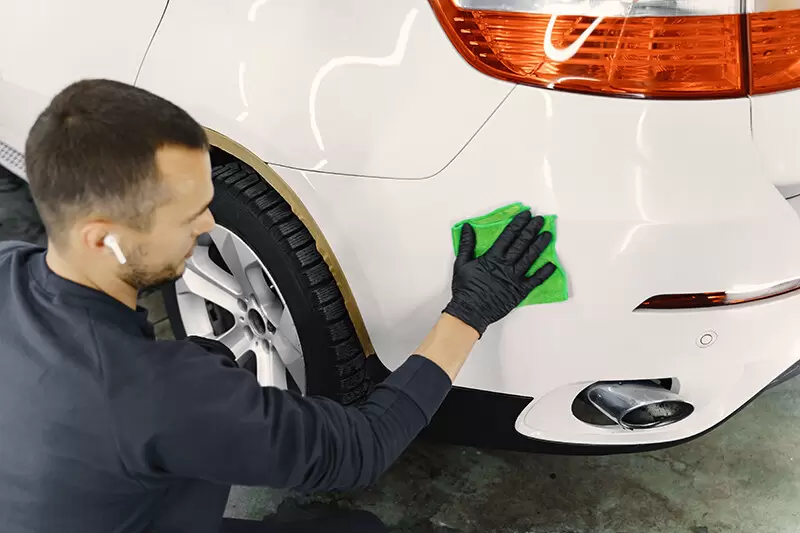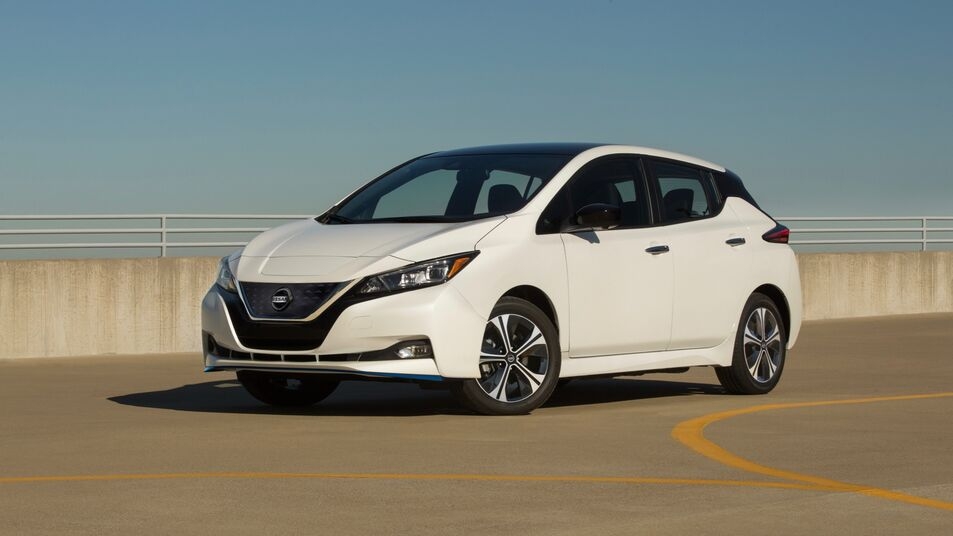Imagine stepping out to your car and spotting an unsightly scratch across its pristine surface—frustrating, right? Maybe it was a rogue shopping cart at the cart return spot, a branch brushing too close, or some random scratches from who-knows-where. Scratches are like little dings to your car’s pride, and they happen to everyone. But here’s the good news: you don’t have to live with them! In this guide, we’re diving into how to get scratches out of a car with easy DIY tricks, pro-level options, and even some hacks to stop them from popping up again.
Why does this matter? Scratches don’t just mess with your car’s good looks—they can hit your wallet too. A study from AutoTrader says even minor scratches can drop your car’s resale value by up to 10%. Plus, if you ignore deep scratches, rust can sneak in and cause bigger problems. So, what’s in store? You’ll learn how to tackle everything from shallow scratches to deep car scratches, plus some pro tips to keep your ride sparkling. Let’s get started!
Understanding Car Scratches
Before you grab a microfiber cloth and start scrubbing, let’s figure out what you’re dealing with. Not all scratches on cars are the same, and picking the right repair process depends on how bad they are. Here’s the scoop:
Types of Scratches
- Clear Coat Scratches: These are the light scratches that only nick the top protective layer. Think surface scratches from wiper scratches or a bush scraping by—they’re annoying but not the end of the world.
- Paint Scratches: These go deeper, hitting the paint color layer. Ever seen jagged edges from a key or sharp objects? That’s a paint scratch, and it shows your car’s base color.
- Primer Scratches: The deepest scratches, these expose the primer or even the metal body panel underneath. Big accidents or nasty scratches from broken-off chips can do this.
How to Identify Scratch Depth
- Visual Check: Look close. If it’s white or clear, it’s likely just the clear coat. Seeing your car’s paint color? That’s a deeper scratch. Bare metal or primer? You’ve got a serious deep car scratch.
- Fingernail Test: Run your nail over it. If it catches on sharp edges, it’s more than a superficial scratch—probably into the paint or worse.
Why bother checking? Matching the scratch to the right scratch removal methods saves you time, elbow grease, and maybe a trip to the auto body shop. Trust me, you don’t want to waste an afternoon on a scratch that needs a pro!
Using Scratch Removal Products
Let’s face it—sometimes you just need a quick fix that works. Commercial scratch-removal products like Meguiar’s ScratchX or 3M Scratch Remover are like superheroes for light scratches. They’re basically polishing compounds that buff out imperfections with a bit of scratch repair magic.
Step-by-Step Guide
- Clean It Up: Wash the scratched area with soapy water to get rid of dirt. A clean surface means no extra scratches from leftover grime.
- Grab Your Gear: Dab a small blob of the product onto a clean microfiber cloth—don’t use a dirty rag!
- Buff It Out: Rub gently in circular motions over the scratch for 1-2 minutes. Use light pressure—you’re not sanding a deck!
- Wipe It Down: Use a fresh microfiber towel to clear off leftover product residue and see how it looks.
- Repeat if Needed: Still see the scratch? Give it another go with a bit more elbow grease.
Pros
- Super affordable—you can grab these at any auto supply store for under $20.
- Beginner-friendly, even if you’ve never touched a car care routine before.
Cons
- Won’t touch deep scratches or anything past the clear coat.
- Might take a couple tries for stubborn bit of scratch marks.
Best For: Clear coat scratches that bug you but aren’t too serious.
The Toothpaste Trick
Ever wonder if your toothpaste could do more than just clean your teeth? Turns out, it’s a secret weapon for tackling light scratches on your car! The mild abrasiveness in toothpaste helps buff out those pesky superficial scratches, especially on the clear coat. For the best shot, grab some whitening toothpaste—it’s got that extra grit to make a difference. Here’s how to pull off this DIY magic trick:
How It Works
The abrasiveness in toothpaste acts like a gentle polish, smoothing out minor scratches that don’t go past the surface. It’s not a cure-all, but for those faint wiper scratches on plastic panels or shallow scratches you can barely feel, it’s a game-changer.
Step-by-Step Guide
- Clean the Area: Start with some soapy water and a clean cloth to wash away dirt. Dry it off with a microfiber towel—nobody wants to grind grime into the scratch, right?
- Toothpaste Time: Dab a bit of whitening toothpaste (skip the gel stuff) onto a damp microfiber cloth. Why whitening? It’s got more oomph for scratch repair.
- Rub It In: Gently rub the scratch in a circular motion for 1-2 minutes. Use light pressure—like you’re polishing a treasure, not scrubbing a pan. Too much elbow grease could dull the original shine.
- Rinse and Wipe: Wash off the excess toothpaste with water and wipe it dry with a clean microfiber towel. Check your work—sparkling yet?
- Repeat if Needed: If the scratch is still hanging around, give it another go. But don’t overdo it—overuse can leave the finish looking flat.
Pros
- Super easy—uses stuff you’ve already got in your bathroom.
- Perfect quick fix for faint scratches that bug you every time you walk by.
Cons
- Won’t touch paint scratches or anything deeper than the clear coat.
- Rub too much, and you might lose that factory gleam.
Best For
Very light clear coat scratches—like those random scratches from a cart return spot that don’t need a trip to the auto body shop.
Sandpaper and Polishing
Okay, what if your scratch is a bit more stubborn—like a deeper scratch that toothpaste can’t handle? That’s where sandpaper and polishing step in. I know, sanding your car sounds wild, but trust me, with the right moves, it’s like erasing those paint scratches with a pro touch. You’ll need some patience and a steady hand—think of it as a mini car care adventure!
What You’ll Need
- Fine-grit sandpaper (2000-3000 grit)—the higher the number, the gentler it is.
- Polishing compound (Turtle Wax or acrylic polishing compound works great).
- Microfiber cloths and a buffing pad.
- A little water for soaking.
Step-by-Step Guide
- Prep the Surface: Wash the scratched spot with soapy water and dry it with a clean microfibre cloth. You want a clean slate—no dirt allowed!
- Wet the Sandpaper: Soak your 2000-grit sandpaper in water for a few minutes. This keeps it smooth and prevents sharp edges from making new scratches.
- Sand Lightly: Use straight back-and-forth motions (not circles) with light pressure for 5-10 seconds, then ease off. It’s like smoothing out a wrinkle—gentle does it!
- Check It Out: Wipe it clean with a damp cloth and inspect. If the scratch is gone or smoothed, you’re golden. If not, repeat—but don’t get carried away, or you’ll sand through the paint!
- Polish It Up: Grab your polishing compound and a buffing pad. Buff in circular motions until it shines like new. Think of it as giving your car a refreshing car care glow.
- Final Touch: Wipe away leftover product residue with a fresh microfiber towel and admire the streak-free shine.
Pros
- Tackles deeper paint scratches that DIY hacks can’t fix.
- Restores that smooth, factory grain pattern when done right.
Cons
- Mess it up with too much pressure, and you’re looking at worse damage—yikes!
- Takes time and care, so it’s not a rush job.
Best For
Paint scratches that stop short of the primer—think jagged edges from a key or a shopping cart scrape.
Professional Scratch Removal Services
Sometimes, a scratch is just too big for DIY—like a deep car scratch exposing the metal. Ever had one of those “How did THIS happen?” moments? That’s when you call the pros at a body shop. They’ve got the fancy tools and know-how to make it disappear. Here’s what you’re in for if you go this route.
What to Expect
The pros use high-tech gear—think buffers, heat guns, and paint-matching tech that nails your car’s color code. They’ll check the scratch damage and figure out the best repair process, whether it’s a quick buff or a full-on repaint with a base semi-gloss color coat. Want to know more, visit our website…
The Process
- Scratch Check: They’ll assess if it’s a surface scratch, a paint chip, or one of those deepest scratches that needs serious love.
- Fix It Up: For minor scratches, they’ll use polishing compounds. For deep scratches, they might apply touch-up paint or even body filler putty for metal body panels.
- Smooth and Blend: They’ll polish and blend it all with a buffing pad for a seamless, factory-fresh finish. No more sharp objects ruining your day!
Cost Breakdown
- Minor Scratches: $50-$150—think small surface scratches or bit of scratch marks.
- Major Repairs: $200-$500+—like repainting a panel after a nasty coat scratch.
Pros
- Guaranteed results, especially for high-value cars or tricky deep scratches.
- No stress—you drop it off and pick up a flawless ride.
Cons
- Hits your wallet harder than DIY, but for the deepest scratches, it’s worth every penny.
Best For
Deep primer scratches or when you just want it done perfectly—no elbow grease required.
Pro Tip: Mike Phillips, a car care guru from Autogeek, says pros can save you from rust headaches down the road. Smart move!
Stat Check: The Automotive Paint Association (2023) says 70% of car owners go pro for scratches past the clear coat. Why? Rust protection and peace of mind—can’t argue with that!
How to Prevent Car Scratches
Why do some cars stay scratch-free while others look like they’ve been through a war zone? It’s all about playing it smart and giving your car some love. Prevention beats repair any day—trust me, it’s less hassle and way kinder to your piggy bank. Here’s how to keep those pesky scratches at bay.
Smart Parking
Picture this: you’re at the mall, and there’s a tight spot right by the entrance or a big open space a little farther out. Which do you pick? Go for the wide space! Parking away from busy spots, shopping carts, or cart return zones means fewer chances of dings from sharp objects or careless doors. Got parking sensors? Use ‘em—they’re like a superhero sidekick for avoiding scratches. Why tempt fate when you can park like a pro?
Protective Gear
Want to give your car an extra layer of armor? Try paint protection film or a clear bra. These are like invisible shields that take the hit from random scratches or jagged edges. If you’re parking long-term—like over a weekend or during a trip—grab a car cover. It’s like a cozy blanket that protects against dust, debris, and even wiper scratches on plastic panels. Your car’s original shine deserves that VIP treatment!
Regular Maintenance
Here’s a little gem: keeping your car clean actually helps prevent scratches. Washing it weekly with soapy water and a clean microfiber cloth gets rid of abrasive dirt that can cause surface scratches. And wax? Oh, it’s a game-changer! Slap on a coat of wax every 3-4 months to beef up the clear coat—it’s like giving your car a force field against light scratches.
Bonus Tip: Skip those brush-style automatic car washes. Those bristles can leave swirl marks or bit of scratch marks faster than you can blink. Go for a touchless wash instead—your paint color will stay sparkling with that streak-free shine.
Stat Time: A 2023 Consumer Reports survey found that 68% of car owners who wash and wax regularly notice fewer minor scratches. That’s no fluke—it’s science!
Frequently Asked Questions (FAQs)
Got questions about how to get scratches out of a car? You’re not alone—tons of folks wonder the same things. Let’s tackle the top FAQs with straight-up answers and a sprinkle of personality.
Can all scratches be removed at home?
Not exactly. Light scratches or superficial scratches? You’ve got this! Grab some commercial scratch-removal products like Turtle Wax or even try the toothpaste trick—yep, the abrasiveness in toothpaste helps buff out faint marks with a clean microfiber towel. But deep scratches that show the metal body panel? Those are tougher. They might need an auto body shop with pros who can use body filler putty or repaint to match the factory grain pattern. Shallow scratches are DIY-friendly; the deepest scratches? Leave ‘em to the experts.
How much does it cost to fix a car scratch professionally?
It’s all about the scratch damage. For minor scratches or surface scratches, you’re talking $50-$150—pretty doable, right? But a deep car scratch that needs repainting or a whole panel fixed? That could run $200-$500 or more, especially in big cities. According to a 2022 Kelley Blue Book report, the average cost for professional scratch repair is around $250. So, it’s an investment, but it keeps your car’s base color looking fresh.
Is toothpaste safe for car paint?
Yep, it’s a handy hack for small stuff! Toothpaste works on superficial scratches because it’s mildly abrasive—just dab some on a damp cloth, rub in a circular motion with light pressure, and wipe off the excess toothpaste with a dry cloth. But don’t go crazy—too much elbow grease can dull the finish. I’d pick whitening toothpaste over the gel kind for best results. It’s not a cure-all, but it’s a solid quick fix.
Can household items like WD-40 remove scratches?
Sorry, no dice. WD-40 is awesome for squeaky hinges, but it’s not a scratch removal agent. It might hide a scratch for a hot minute, but it won’t fix it—and it could mess up your paint color over time. Stick to real scratch repair tricks like polishing compounds or plastic scratch polish kits. Keep WD-40 in the garage where it belongs!
How often should I wax my car?
Every 3-4 months is perfect for most folks. Waxing adds a coat of wax that fights off light scratches and keeps that streak-free shine popping. If you’re in a snowy place or park outside a lot, maybe bump it up to every 2-3 months. Car care guru Mike Phillips from Autogeek calls waxing “the easiest way to armor your car.” I’m with him—small effort, big payoff!
Fun Fact: A 2023 AAA study showed that waxed cars are 30% less likely to get base coat scratches from everyday wear. That’s wax doing its magic!
Conclusion
So, how do you get scratches out of a car? Let’s break it down quick and easy:
- Light scratches: Hit ‘em with commercial scratch-removal products or toothpaste. Rub gently with a microfiber cloth—done!
- Deeper scratches: Break out the 2000-grit sandpaper (soaked in water) and some acrylic polishing compound. Go slow with back-and-forth motions to smooth those jagged edges.
- Deep car scratches: Call the body shop pros—they’ll handle the heavy lifting with paint and body lines.
- Surface scratches: A quick buff with a buffing pad and polish can bring back that original shine.
Action Step: Start with the DIY stuff for minor scratches—it’s fun and saves cash! But if you spot a monster scratch or just aren’t sure, don’t sweat it—get a pro from an auto supply shop or body shop to check it out. You’ve got options!
Closing Thought: A scratch-free car isn’t just about looking good (though that’s a perk!). It’s about pride, protection, and keeping your ride ready for whatever’s next. So, next time a shopping cart gets too close, you’ll know how to keep it safe.
Extras: Curious for more? Peek at our post on “Top Car Scratch Removal Products” or snag a clean microfibre cloth from our fave tools list. Happy car-caring!








